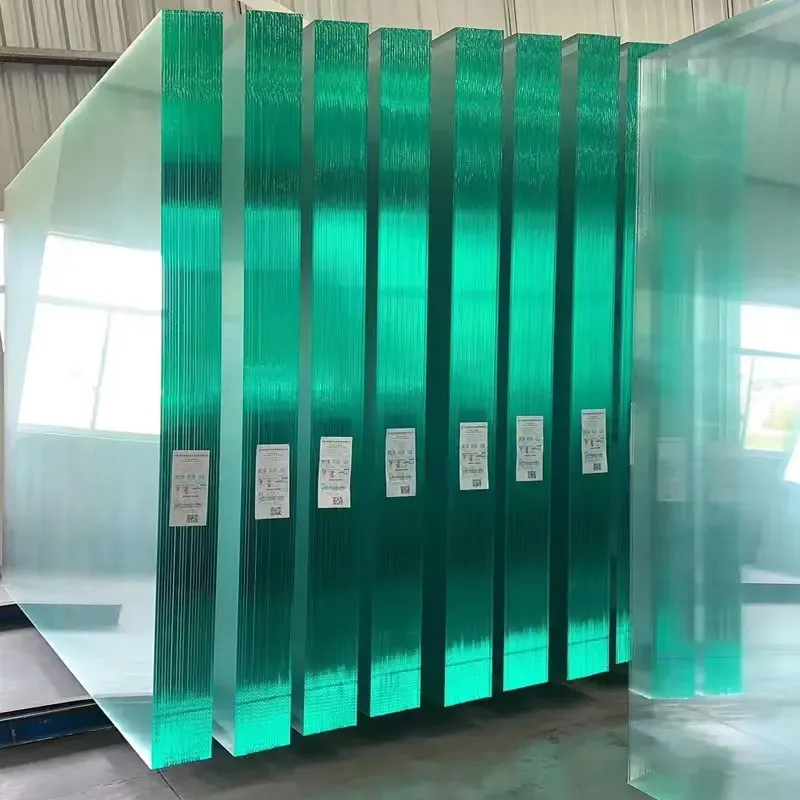Understanding Float Glass Plates Their Composition, Properties, and Applications
Float glass plates are widely recognized in the glass manufacturing industry for their exceptional clarity and uniform thickness. Produced through the float glass process, these plates have become indispensable in various applications ranging from architecture and automotive industries to electronics and art. This article delves into the composition, properties, and diverse applications of float glass plates.
What is Float Glass?
Float glass is made by floating molten glass on top of molten tin, a method developed in the 1950s by Sir Alastair Pilkington. This innovative technique allows for the creation of flat glass with minimal distortion and surface imperfections. The term float describes the process in which the glass floats on the tin, resulting in a perfectly smooth surface. Once the glass cools down and solidifies, it can be cut into plates of various sizes.
Composition of Float Glass Plates
Float glass plates are primarily composed of silica (SiO2), which is the main ingredient of glass. In addition, the formulation includes soda (Na2O) and limestone (CaCO3), which lower the melting point of silica and stabilize the glass structure. Minor additives such as alumina, magnesium oxide, and various metal oxides are included to enhance specific properties like durability, thermal resistance, and color. The precise formulation can vary depending on the intended application of the glass.
Key Properties of Float Glass Plates
1. Clarity and Transparency One of the most remarkable characteristics of float glass is its outstanding clarity. This quality makes it ideal for applications where transparency is crucial, such as windows, mirrors, and display cases.
2. Uniform Thickness The float glass process yields plates with uniform thickness, an essential requirement for many applications, including architectural uses and in the manufacturing of lenses and optical devices.
3. Chemical Resistance Float glass is resistant to various chemicals, making it suitable for use in laboratories and industries where exposure to substances could occur.
4. Thermal Stability Float glass can withstand a range of temperatures. However, it is important to note that specific types of float glass have varying thermal resistance capabilities, which can be further enhanced through processes like heat treatment or lamination.
float glass plate
5. Reflective Properties Depending on the composition, float glass can exhibit reflective qualities, making it popular for mirrors and other reflective surfaces.
Applications of Float Glass Plates
Float glass plates find extensive applications across different industries
1. Architectural Applications Float glass is predominantly used for windows, facades, and storefronts in buildings. Its clarity and aesthetic appeal allow architects to design spaces that maximally utilize natural light while providing visibility to the outside.
2. Automotive Industry Car windows and windshields often utilize float glass plates because of their optical clarity and strength. Safety glass variants, such as laminated or tempered float glass, are essential for passenger safety.
3. Electronics The electronics industry uses float glass in the production of screens for televisions, monitors, and smartphones. The flatness and clarity of the glass are critical in ensuring visual quality and device performance.
4. Interior Design and Art Float glass plates are also used in decorative applications, such as table tops, art installations, and museum displays. Their aesthetic qualities help highlight artworks while providing durability and protection.
5. Solar Energy Float glass is vital for solar panels, where its transparency allows sunlight to penetrate effectively while protecting the photovoltaic cells beneath.
Conclusion
Float glass plates are an exemplary innovation in the glass industry, offering a remarkable combination of clarity, uniformity, and durability. Their versatile applications across various sectors demonstrate their significance in modern life, from enhancing architectural designs to contributing to technological advancements in electronics and renewable energy. As advancements in glass technology continue, float glass plates will likely evolve further, paving the way for new possibilities and applications.
 Afrikaans
Afrikaans  Albanian
Albanian  Amharic
Amharic  Arabic
Arabic  Armenian
Armenian  Azerbaijani
Azerbaijani  Basque
Basque  Belarusian
Belarusian  Bengali
Bengali  Bosnian
Bosnian  Bulgarian
Bulgarian  Catalan
Catalan  Cebuano
Cebuano  Corsican
Corsican  Croatian
Croatian  Czech
Czech  Danish
Danish  Dutch
Dutch  English
English  Esperanto
Esperanto  Estonian
Estonian  Finnish
Finnish  French
French  Frisian
Frisian  Galician
Galician  Georgian
Georgian  German
German  Greek
Greek  Gujarati
Gujarati  Haitian Creole
Haitian Creole  hausa
hausa  hawaiian
hawaiian  Hebrew
Hebrew  Hindi
Hindi  Miao
Miao  Hungarian
Hungarian  Icelandic
Icelandic  igbo
igbo  Indonesian
Indonesian  irish
irish  Italian
Italian  Japanese
Japanese  Javanese
Javanese  Kannada
Kannada  kazakh
kazakh  Khmer
Khmer  Rwandese
Rwandese  Korean
Korean  Kurdish
Kurdish  Kyrgyz
Kyrgyz  Lao
Lao  Latin
Latin  Latvian
Latvian  Lithuanian
Lithuanian  Luxembourgish
Luxembourgish  Macedonian
Macedonian  Malgashi
Malgashi  Malay
Malay  Malayalam
Malayalam  Maltese
Maltese  Maori
Maori  Marathi
Marathi  Mongolian
Mongolian  Myanmar
Myanmar  Nepali
Nepali  Norwegian
Norwegian  Norwegian
Norwegian  Occitan
Occitan  Pashto
Pashto  Persian
Persian  Polish
Polish  Portuguese
Portuguese  Punjabi
Punjabi  Romanian
Romanian  Russian
Russian  Samoan
Samoan  Scottish Gaelic
Scottish Gaelic  Serbian
Serbian  Sesotho
Sesotho  Shona
Shona  Sindhi
Sindhi  Sinhala
Sinhala  Slovak
Slovak  Slovenian
Slovenian  Somali
Somali  Spanish
Spanish  Sundanese
Sundanese  Swahili
Swahili  Swedish
Swedish  Tagalog
Tagalog  Tajik
Tajik  Tamil
Tamil  Tatar
Tatar  Telugu
Telugu  Thai
Thai  Turkish
Turkish  Turkmen
Turkmen  Ukrainian
Ukrainian  Urdu
Urdu  Uighur
Uighur  Uzbek
Uzbek  Vietnamese
Vietnamese  Welsh
Welsh  Bantu
Bantu  Yiddish
Yiddish  Yoruba
Yoruba  Zulu
Zulu 

